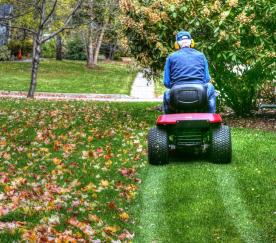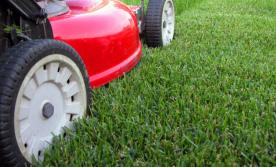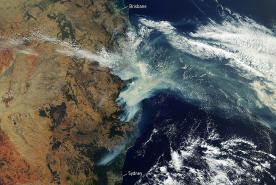News
PFAS levels higher in fertilizers made from urban waste
October 25, 2021
New variants of PFAS urgently need more study, researchers say by Alla Katsnelson, special to C&EN October 23, 2021 | A version of this story appeared in Volume 99, Issue 39
Read MoreMow Your Leaves for a Better Environment!
October 13, 2021
IT’S TIME FOR OUR ANNUAL APPEAL: LEAVE THE LEAVES Feed your lawn by mowing the leaves. It’s good for the environment and good for your lawn. We’ve been preaching the benefits of mowing your leaves for almost 10 years now and it’s beginning to catch on! If you’re skeptical, just try it on a portion of your lawn, maybe a side yard, or behind the garage. To quote Scotts Fertilizer: “When spring arrives, you'll notice something: The leaf litter you mulched up in the fall will have disappeared.
Read MoreA few ways to be nice to your lawn
September 29, 2021
SEPTEMBER 27, 2021 By Doug HartmanHorticulture Assistant, Extension Brown County Looking back at our client records from the season, lawn questions rank high in the number of calls and emails at the Horticulture Help Desk at Extension Brown County. Many times, homeowners are seeking help with a lawn that’s thin, full of weeds or dying in sections.
Read MoreBiostimulants Market 2021 Outlook, Current and Future Industry Landscape Analysis 2029
September 28, 2021
The global biostimulants market is set to grow at a stellar CAGR of 11% during the forecast period (2019-2029), witnessing 3X growth in revenues. As projected by a new report of Future Market Insights (FMI), the growth of market is primarily fueled by the growing preference for bio-based ingredients in agrochemicals and crop growth additives, and a measurable rise in agricultural and horticultural production around the globe.
Read MoreWhat is Biofertilizer?
September 27, 2021
The fertilizers are used to improve the fertility of the land using biological wastes, hence the term biofertilizers, and biological wastes do not contain any chemicals which are detrimental to the living soil. After the introduction of chemical fertilizers in the last century, farmers were happy of getting increased yield in agriculture in the beginning. But slowly chemical fertilizers started displaying their ill-effects such as leaching out, and polluting water basins, destroying micro-...
Read MoreFall and Winter Lawn Care Tips
September 27, 2021
The fall and winter are actually great times to do a few things in the yard to make sure the lawn is ready to go come spring. By Michelle Giddens - September 27, 2021
Read MoreBiostimulants - what are they and what do they do?
September 22, 2021
by Martin Ward in Chemicals & Fertilisers and Consultancy on 10 Feb 2016 (This article appeared in Pitchcare Magazine Issue 64)
Read MoreCape Coral leaders could expand restrictions on fertilizer use
September 22, 2021
by Alex Howard 6:46 PM EDT, Tue September 21, 2021 CAPE CORAL, Fla. — City leaders are looking to crack down on the use of fertilizers. A proposed rule would lengthen the period that its use is banned during the summer months. It would also extend the distance from the water that any fertilizer could be applied to 15 feet.
Read MoreMillennials are obsessed with lawns: 4 ways to make yours more attractive
September 21, 2021
Looking out onto a lush and beautifully manicured lawn has been an aspirational thing to do for many generations of homeowner’s and millennials are no different in wanting to carry on with that obsession. One of the best ways to ensure that your lawn meets all of your expectations is to arrange a professional turf installation so that you know it is going to have the best chance of maintaining its impressive looks as long as you look after it.
Read MoreAustralian wildfires fertilized expansive algal blooms: Study
September 21, 2021
09/17/2021 by Lena Beck Australia’s 2019-2020 fire season garnered international attention as an environmental catastrophe. The ecological implications of these fires were many: over 18 million hectares burned, and researchers estimate that nearly three billion animals either died in the fires or were driven from their habitats. The smoke and ash would linger after the last fires were extinguished. It is estimated that 830 million tons of carbon dioxide was released into the atmosphere during...
Read More



